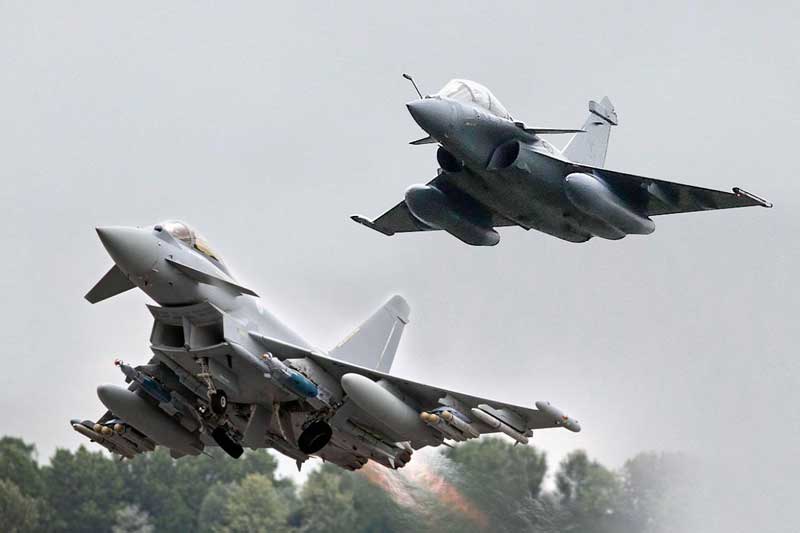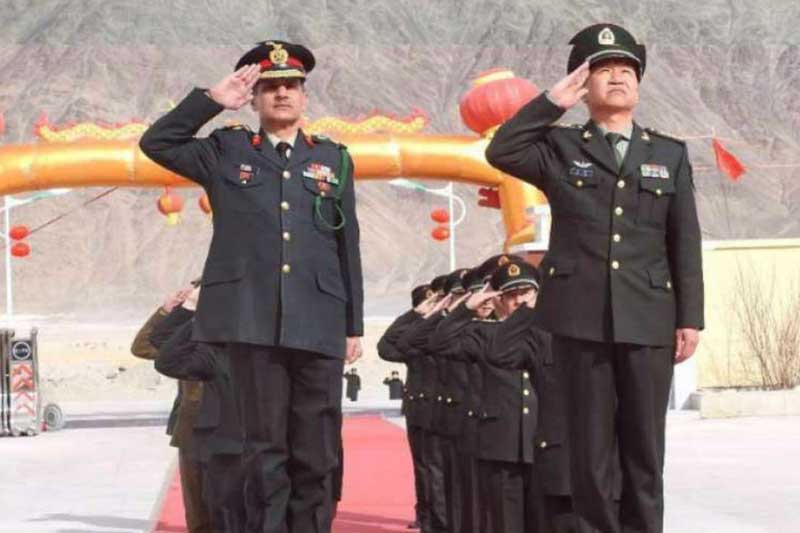The Indian Air Force (IAF) is working its Rafale contender planes in the Ladakh theater where the military is on its most important condition of alarm amid elevated fringe strains with China even as corps authority positioned officials from the two armies are set to meet for the 6th round of military chats on Monday, sources acquainted with the improvements said on Sunday.
The military discourse – which is probably going to begin at 9 am at Moldo on the Chinese side of the Line of Actual Control (LAC) over the Chushul area – will, just because, include the cooperation of a joint secretary-positioned official from the service of outer issues as a stage to guarantee that the discussions yield a positive result, the authorities stated, mentioning namelessness.
The Working Mechanism for Consultation and Coordination (WMCC) on border affairs — the diplomatic dialogue between the two countries– involves representing the Indian defense ministry.
Corps commander-ranked officers from the two armies have met five times but failed to break the Ladakh sector’s deadlock, which has seen a significant military buildup.
The IAF’s current fleet of five Rafale fighters is fully operational and ready to undertake any mission, the officials cited above said. India ordered 36 Rafale jets from France in a deal worth Rs 59,000 crore in September 2016.
The air force formally inducted the planes at the Ambala airbase on September 10 though they landed at their home base on July 29. At the induction, IAF chief Air Chief Marshal RKS Bhadauria made it clear that the warplanes were mission-ready. The ceremony marked their “full operational induction” into the air force.
The Rafale jets are part of the IAF’s No. 17 Squadron, also known as the Golden Arrows.

The IAF chief said at the ceremony that after the Rafales arrived at Ambala on July 29, the squadron had been “really busy and in overdrive to operationalize” the new fighters.
“Within this time (after the jets arrived), they have already flown and familiarised in our operational environment and have undergone intense integrated training with other combat fleets, including firing advanced weapons.
They are good to go and deliver,” Bhadauria said in Ambala, adding that the warplanes couldn’t have joined the air force’s combat fleet at a more reasonable time considering the current security scenario.
India-specific enhancements on the jets include cold engine start capability to operate from high-altitude bases. The Rafale weapons includes Meteor beyond visual range air-to-air missiles, Mica multi-mission air-to-air missiles, and Scalp deep-strike cruise missiles — weapons that allow fighter pilots to attack air and ground targets from standoff ranges.
“The stalemate in talks is giving time for consolidation of forces. The Rafale, too, would have been put through its paces and integrated with the existing IAF network, augmenting the air force’s capabilities,” said Air Vice Marshal Manmohan Bahadur (retd), additional director general, Centre for Air Power Studies.
The next batch of three to four Rafale jets is expected to reach Ambala from France in October, followed by a third batch in December. All deliveries will be completed by the end of 2021.
A high-powered panel on China reviewed the latest developments in the Ladakh sector last week, with a focus on charting the course of future negotiations to restore the status quo ante of mid-April along the contested Line of Actual Control (LAC).
The plan for the upcoming military talks between Indian and Chinese corps commander-ranked officers was discussed at the high-level meeting, even as Ladakh’s situation remains tense after a series of recent maneuvers by the two armies in the Pangong Tso area.
The officials said Lieutenant General Harinder Singh, who heads the Leh-based 14 Corps and has been leading the military talks with China to reduce border tensions, will finish his term next month and is expected to be replaced by Lieutenant General PGK Menon. Singh took charge of the corps in October 2019.
The upcoming meeting of Indian and Chinese corps commander-ranked officers will be their first after the Indian Army swiftly moved and occupied a series of key heights to prevent the People’s Liberation Army from grabbing Indian territory bank Pangong Tso in a stealthy midnight move on August 29.
The Indian Army now controls ridgeline positions on the southern bank of Pangong Tso that allow it to completely dominate the sector and keep an eye on Chinese military activity. The places scattered across Rezang La, Reqin pass, Gurung Hill, and Magar heights.
The Indian Army has also taken control of crucial heights overlooking the PLA’s deployments on the Finger 4 ridgeline on the northern bank of Pangong Tso, where rival soldiers are deployed a few hundred meters barely from each other, as reported by Live Heed on September 10.
Last week, defense minister Rajnath Singh told lawmakers in Parliament that no force in the world can stop the Indian Army from patrolling borders, signaling a resolve to regain access to several areas that are now difficult to reach actions the Chinese Army along the LAC.
In early May, Indian and Chinese troops have come face-to-face at multiple points along the LAC. In some areas, particularly the Finger Area and Depsang, Indian forces have been cut off from reaching forward zones they could previously patrol.
